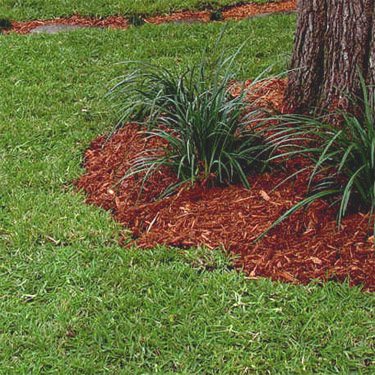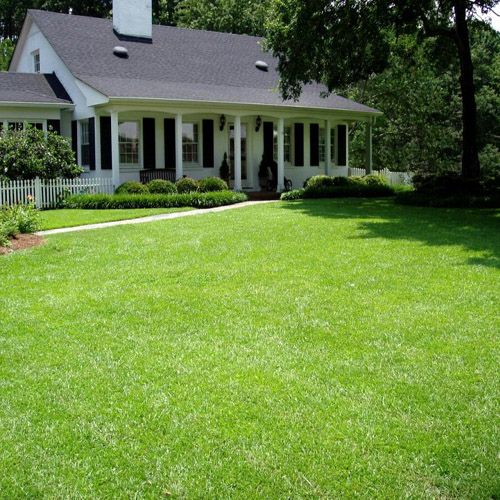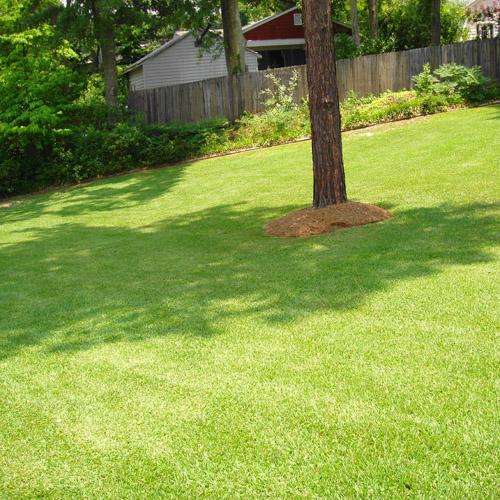Centipede Grass Seed





Centipede Grass: a slow growing, apple-green, coarse leaved turf grass that is used for a low maintenance, general purpose turf. It requires little fertilizer, infrequent mowing, and will tolerate moderate shade if it receives at least four hours of full sun a day. Over fertilizing to obtain an unnatural dark green color reduces its cold tolerance and usually increases long-term maintenance problems. Centipede grass is slow-growing grass but aggressive enough that it can be depended upon to produce a good, dense, relatively weed-free turf at low maintenance levels. In spite of its spreading growth habit, Centipede grass is easily controlled and usually requires edging only once a year around walks and flower beds.
Known by many as Lazy Man's Grass, Centipede grass seed usually produces a good turf at low fertility and with little management, but it responds nicely to good care. It is incapable of producing as high quality turf as the Bermuda and Zoysia grasses, but it frequently looks better than either because the "high-brow" grasses are not getting the more exacting care they need.
Centipede Grass Characteristics
- Easiest of all the grasses to cut
- Reel or rotary mower, if sharp, does an easy and attractive cutting job
- Does not look scalped when cutting is delayed too long and excessive growth removed
- Greens up rapidly after a brief drought with irrigation or rainfall
- Suited to acid soils (pH range of 5.0 to 6.5)
- Should be fertilized very sparingly
- Generally more trouble-free than other grasses if watered properly and fertilized sparingly or not at all
This creeping perennial is well adapted to the sandy, acidic soils of low fertility and requires low maintenance. Centipede grass spreads by stolons and has a coarse texture with short upright stems that grow to about 3-5 inches. It requires less mowing, and it survives in mildly cold temperatures as long as there aren’t several hard freezes. Centipede turf grass does not go into a true dormancy, and with light freezes it will turn brown but will recover and re-green as soon as temperatures warm up.
With a worldwide reputation for providing attractive lawn cover with the lowest maintenance requirements of any grass grown, growing Centipede grass is the lazy man's grass of preference. This shade and drought tolerant pale green turf is the dominant turf grass in lawns of the mid-south.
When Centipede grass is healthy it can be dense enough to keep out weeds and other grasses. In the south this grass will remain green throughout the year. Although the roots are not as deep as Bahia or Bermuda, its close to the ground growth allows for better conservation of water and helps fight drought.
Centipede Grass Care and Maintenance
Fertilizer
Apply between 1 and 2 pounds of nitrogen per 1000 sq. feet annually, during the growing season. Select a fertilizer that is labeled for use on Centipede lawn grass and contains iron. Do not apply fertilizer to wet turf to avoid burning. Too much fertility will result in a thatch laden and unhealthy lawn. Do not apply lime without a soil test to see if your soil is too acidic.
Mowing
Mow between 1 to 2 inches high. Catch and remove clippings. Never remove more than 1/3 of the leaf at any one cutting. Always use a sharp blade. Can be mowed with either reel or rotary mower.
Watering
Though drought tolerant, Centipedegrass prefers infrequent deep watering. Do not over-water (avoid standing water for any period of time). When planting Centipede lawn seed, ensure that the grass seed stays moist until germination.
Thatch Removal
Periodically it may be necessary to remove accumulated thatch and debris. This is best accomplished in the late winter - just before Centipede turf turns green. Scalp or rake heavily and remove debris.
Weed Control
Centipede grass has an open growth that can encourage the weed population to grow. Use of a pre-emergent herbicide, recommended for use on Centipede lawns on the label, is strongly recommended in the spring and fall.
Pest Control
Pests can become a problem, especially if Centipede grass is not growing in a healthy way - too much or too little fertilizer or water, etc. If pests persist, contact the local county agent or nursery owner and ask for assistance in identification of the problem and the recommended control.
Centipede Grass Seeding Rate & Planting Time
- New turf: Sow Centipede turf grass seed at 1/2 - 1 pound per 1,000 square feet or 20 - 40 lbs/acre for broadcast seeding
- Plant warm climate grass seed when soil temperature reaches 70 degrees in spring up until a minimum of 10 weeks before frost in fall































